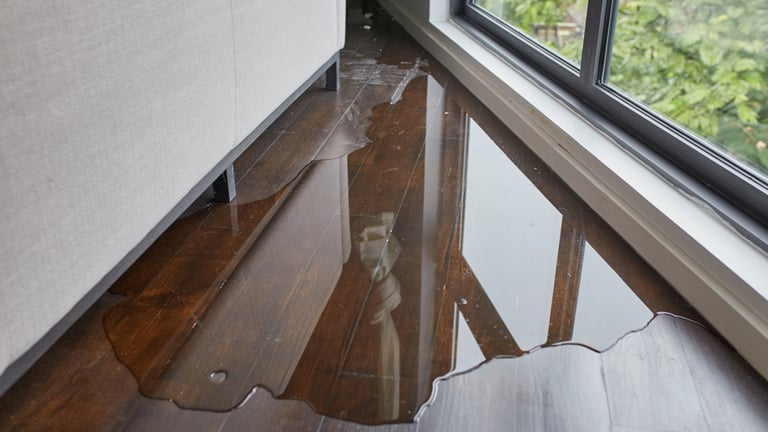Do's & Don'ts of Water Damage.
Do's & Don'ts of Water Damage.
Blog Article
Do you find yourself trying to locate help around Preventing Fires and Water Damage In Your Home?

Though water offers life, water intrusion on parts where it's not expected to be can cause damage. It can peel off away surfaces as well as wear down the structure if the water saturates right into your structure. Mold and mildew likewise flourish in a damp environment, which can be dangerous for your health and wellness. Houses with water damages odor old as well as moldy.
Water can originate from several resources such as tropical storms, floodings, burst pipes, leakages, and also drain problems. In case you experience water damage, it would be excellent to recognize some safety and security preventative measures. Below are a couple of guidelines on how to handle water damages.
Do Prioritize Residence Insurance Policy Protection
Water damage from flooding because of heavy winds is seasonal. However, you can additionally experience a sudden flooding when a damaged pipe instantly breaks into your house. It would be best to have residence insurance policy that covers both acts of God such as natural calamities, and also emergency situations like busted plumbing.
Don't Neglect to Turn Off Energies
This reduces off power to your entire house, stopping electric shocks when water comes in as it is a conductor. Don't neglect to turn off the major water line valve.
Do Remain Proactive as well as Heed Climate Alerts
Listen to evacuation cautions if you live near a lake, creek, or river . Doing so decreases potential residential or commercial property damage.
Do Not Disregard the Roof
You can avoid rain damage if there are no holes and also leakages in your roofing system. This will certainly avoid water from moving down your wall surfaces and saturating your ceiling.
Do Focus On Small Leakages
A burst pipe does not take place overnight. You may discover gurgling paint, peeling off wallpaper, water streaks, water spots, or leaking noises behind the wall surfaces. Have your plumbing fixed prior to it results in huge damages.
Do Not Panic in Case of a Ruptured Pipeline
Maintaining your clearheadedness is vital in a time of crisis. Because it will certainly suppress you from acting quickly, panicking will only compound the problem. Timing is essential when it comes to water damage. The longer you wait, the more damage you can expect. Thus, if a pipe bursts in your home, instantly turned off your primary water valve to cut off the resource. After that disconnect all electric outlets in the location or shut off the circuit breaker for that part of your home. Lastly, call a trustworthy water damages reconstruction professional for aid.
Water gives life, water breach on parts where it's not expected to be can result in damages. Houses with water damage scent moldy and also old.
Water damage from flood fees to heavy winds is seasonal. You might discover bubbling paint, peeling off wallpaper, water streaks, water stains, or trickling sounds behind the wall surfaces. When it comes to water damage, timing is key.
Water Damage Do's and Don'ts
Do's
Always use rubber gloves to protect your hands & rubber boots to protect your feet and legs. Damage from water and bacteria growth can begin within hours. Call for professional help. Remove as much water as possible by mopping and blotting with sponges. Pull up wet rugs and carpets if hardwood floors are below. Lift draperies off the floor, loop through a coat hanger and place the hanger on the drapery rod. Wipe furniture, prop up wet furniture cushions for even drying and place aluminum foil under furniture legs. Move photos, paintings, art objects, computers, other electronics and valuables to a safe, dry location. Do not remove books from shelves. Pack them tightly to prevent page warping until a restoration professional can begin this specialized drying. Ventilate wet areas. Turn on air conditioning for faster drying in summer (only if there is no visible mold) and winter, alternate cycles of opened windows and heating. Also, open drawers, closets and cabinet doors to enhance drying. Don'ts
Do not enter rooms where there is wet and sagging ceiling! Do not enter a room with standing water until electricity has been turned off. Do not use a regular household vacuum to remove water. Use heat to dry closed building interiors. Mildew and more moisture damage can occur. Do not use electrical appliances while on wet carpet or flooring. Do not disturb visible mold. https://www.myknowledgebroker.com/blog/personal-insurance/water-damage-dos-and-donts/

Do you really like reading up on 5 Home Safety Tips To Reduce The Risk Of Fire And Water Damage? Create a remark directly below. We would be delighted to know your thinking about this review. We are looking forward that you come back again soon. Appreciated our write-up? Please share it. Help another person locate it. Thank you so much for going through it.
Report this page